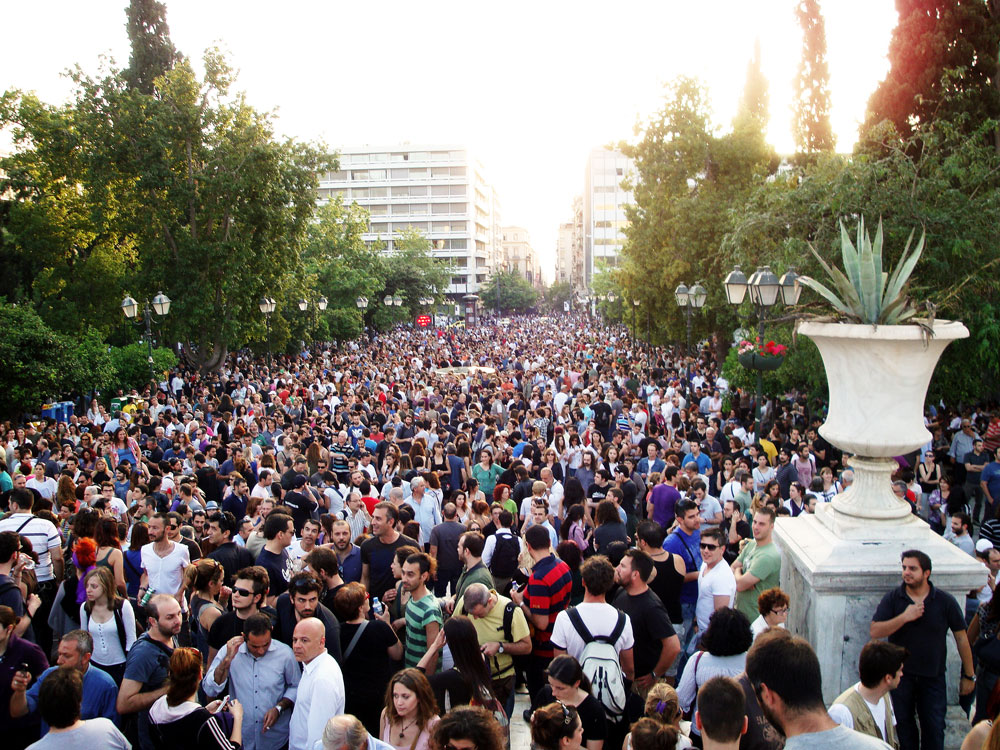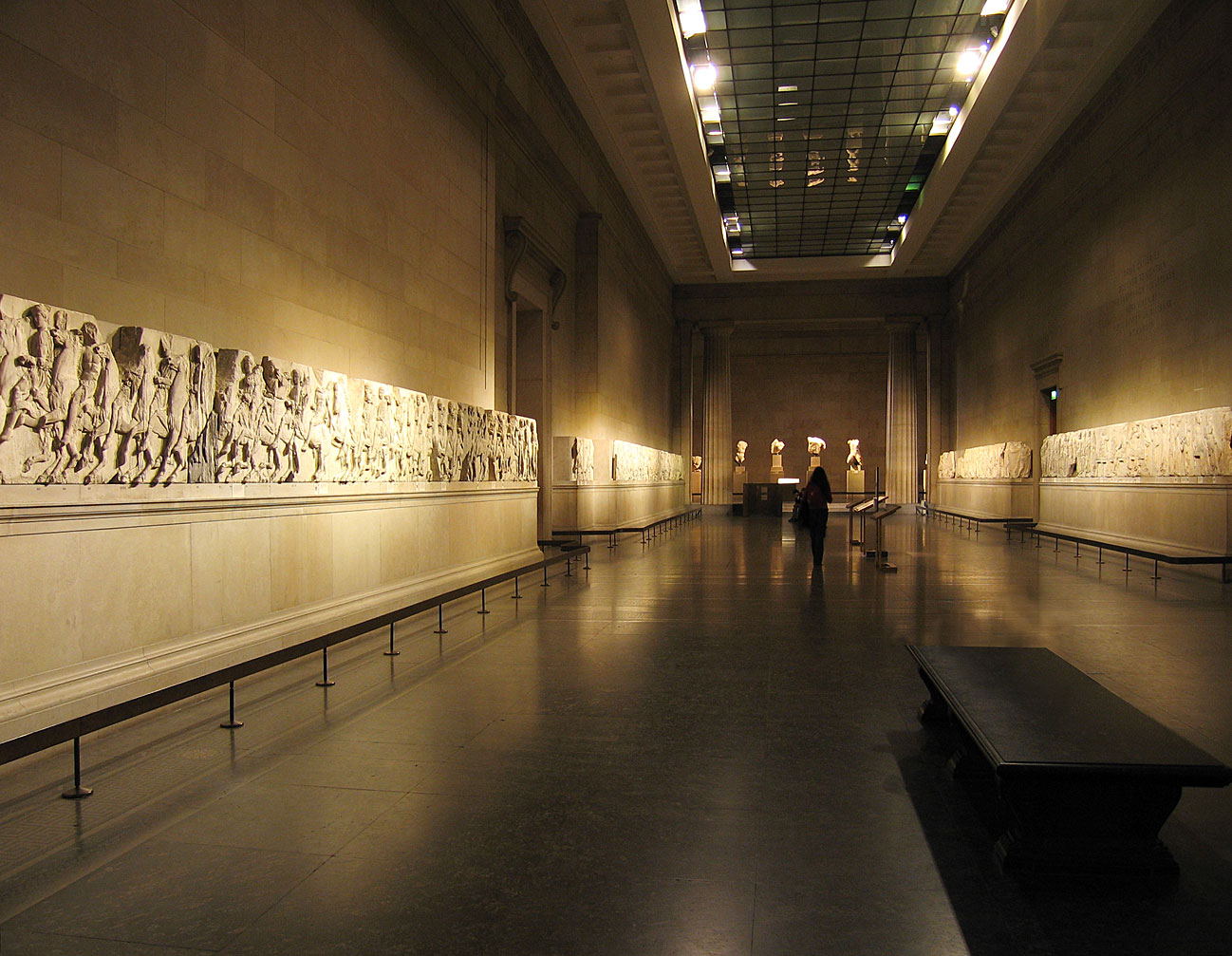 |
Rooftop view from Amalia Hotel towards the Acropolis
|
We've passed through the
Glorious City on three separate occasions on our 200 days around the world trip - twice as a connecting point for the Cyclades group of islands and the third during or cruise through the Mediterranean and Black Sea. On the first two visits we stayed at the Amalia Hotel - just a stone's throw from Syntagma Square and the Parliament Building (the former Royal Palace) in the heart of the city.
 |
| Hellenic Parliament and Syntagma Square |
Syntagma Square is the focal point for the ongoing protests and civil unrest over the Papandreou Government's response to the country's sovereign debt crisis by introducing tough austerity measures. Fortunately, the only demonstration in the square whilst we were in town was mostly peaceful and relative small and apart from a 24 hour transport strike on the day we flew in from Santorini, we were completely unaffected.
 |
| Demonstration in Syntagma Square |
Athens is one of the world's oldest (with a recorded history spanning more than 3,400 years) and the cradle of western civilisation. It therefore seemed fitting that in a city bursting at the seams with history we came across this antique (2nd hand junk?) shop in the markets area that was screaming out to be explored. What a pity we couldn't fit anything else in our luggage - we settled for "just looking" and a photo instead.
 |
| You want it - they've got it |
We spent the first afternoon (late) watching colours of the sun set on the Parthenon from the top of a nearby rocky outcrop on the Hill of Acropoli.
 |
| Sunset on the Hill of Acropoli |
We discovered and dined (twice!) at the classiest Greek café you've ever seen! It's called
Zonar's - Le café d'Athènes and according to a couple of references on the web it is quite famous. As you can see from the photo, we reckon that every Australian country town should aspire to get one of these (well at least half as flash as this)!
 |
| Zonar's - Le café d'Athènes |
The 170 year old National Garden of Athens (just across the street from our hotel) was a wonderful place to escape the traffic and the noise. What made this park unusual (if not unique) and special was that as we strolled were constantly "coming across" pieces from ancient ruins which seemingly were just lying about.
 |
| National Garden of Athens |
The gardens also contain the neo-classical Zappeion Hall. The Zappeion was the first building to be erected specifically for the revival of the Olympic Games in the modern world. The cornerstone of the building was laid in 1874 and the building was opened in 1888. It was the used during the 1896 Summer Olympics as the main fencing hall and a decade later, at the 1906 Summer Olympics, it was used as the Olympic Village. More recently it served as the first host for the Athens organizing committee for the 2004 Games from 1998 to 1999 and served as the press center during the 2004 games.
 |
| Zappeion Hall |
Just a stone's throw from Zappeion Hall is Hadrian's Gate, the Temple of Olympian Zeus and the Panathinean Stadium.
 |
| Temple of Zeus |
The Panathinean Stadium is also known as the
Kallimarmaro (i.e. the
beautifully marbled) seats 60,000 spectators.
The original stadium on this site was constructed around 330BC. It was used in games to celebrate the Goddess Athena and was renovated many times before it was used for the first Modern Olympics in 1896 and again in the 2004 Games (as the home of archery and finishing point of the Marathon). It's a very impressive replica of the ancient Athenian stadiums and is the only major stadium to be made entirely of white marble. The
Kallimarmaro will also be featured on the 2012 London Medals.
 |
| Panathenaic Stadium |
We visited the new Acropolis Museum during our final visit. It was built to hold the ancient archaeological findings related to the Acropolis Hill, spanning 2500 years. it is located just 300 metres south of and is visually linked to the Acropolis and the Parthenon. Inside the Parthenon Gallery, a rectangular, solid concrete core was built to the same dimensions and orientation as the Parthenon. It was designed to receive and display the entire temple frieze. At its base, the museum is suspended on and appears to be floating above an archaeological excavation in progress.
 |
| New Acropolis Museum |
The commentary provided to people visiting the museum regarding the return of the
Elgin Marbles (architectural members and sculpture) which were "taken" by
Thomas Bruce, 7th Earl of Elgin in the early 1800s back to the British Museum was strident and particularly biased against Lord Elgin's actions.
 |
| Lord Elgin |
Initially Lord Elgin obtained casts and drawings of the sculptured portions of the Parthenon. He decided to carry out the work (at his own expense) and employed artists to take casts and drawings under the supervision of the Neapolitan court painter Giovani Lusieri.
While conducting surveys, he found that Parthenon statuary that had been documented in a 17th century survey was now missing, and so he investigated. According to a Turkish local, marble sculptures that fell were being burned to obtain lime for building construction. Fearing that they would eventually be destroyed because of Turkish indifference, he obtained permission “to take away any pieces of stone with old inscriptions or figures thereon” Although the original intention was only to document the sculptures, in 1801 Lord Elgin began to remove material from the Parthenon and its surrounding structures for conservation and exhibition back in London.
 |
| Parthenon Marbles located in the British Museum, London |
Directors of the British Museum have not ruled out temporarily loaning the marbles to the new museum, but state that it would be under the condition of Greece acknowledging British ownership.
In the meantime the new museum is painstakingly undertaking laser cleaning of the marble sculptured portions of the Parthenon as opposed to the pieces in London which were irrevocably damaged (by scrubbing in the 1930s).
_____________
What we saw and experienced in Italy will follow very shortly. In the meantime please keep sending in your comments and questions.
Just click on the word "comments" below. You can just select "Comment as: Anonymous" if that's easiest but sign off with your name (so we know that you posted the comment).
Also if you're unsure which stories you have read and which ones you've missed you might find the Blog Archive (at the bottom of the page) an easy way to choose the post/s that you haven't caught up with yet.
















It certainly is a marvelous trip you are having. Very Jealous.
ReplyDeleteZonar's sounded good. We were recommended by a local to go to a restaurant called "Chocolate" in the strip near the near the little parthonon. Very nice. Did you pose on the medal dias at the stadium? We really enjoyed watching the changing of the guard at the tomb of the unklnown soldier in Athens.
Tom Blow
Sounds like another wonderful experience in Athens .... hope you are sparing an occasional thought for those of us still at work back in Oz!
ReplyDeleteSeems you had better add flooding in Italy to the "disasters averted"!
ReplyDeleteWe saw the Elgin Marbles in London last year - would sure be great to see them back where they belong - the British Museum has plenty of other antiquities!
Thanks for another great installment of "How to Keep One Step Ahead of Natural (and not so natural)Disasters".
Love Anne and Steve